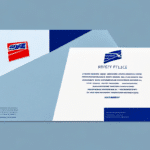The Benefits of USPS Priority Mail
Sending packages through the United States Postal Service (USPS) offers a balance of affordability and reliability. Priority Mail is especially favored by small businesses and individual shippers for several reasons:
- Fast Delivery: Typically delivers within 1-3 business days within the U.S.
- Free Pick-Up: USPS provides free package pick-up services from your location.
- Free Tracking: Track your package's journey from sender to recipient.
- Insurance Coverage: Includes up to $50 of automatic insurance, with options to purchase additional coverage.
- Flat Rate Packaging: Access to flat rate boxes and envelopes allows shipping items of similar size and weight for a fixed price, regardless of destination.
- International Shipping: Priority Mail International enables shipping to over 190 countries with delivery times of 6-10 business days, including tracking and insurance options.
According to recent USPS reports, Priority Mail accounts for approximately 35% of all parcels shipped annually in the U.S., underscoring its popularity and reliability.
USPS Priority Mail Insurance Policies
Coverage Details
Not all Priority Mail shipments come with automatic insurance. Understanding USPS insurance policies is crucial to ensure your packages are adequately protected:
- Domestic Priority Mail: Offers up to $50 of insurance at no additional cost. Additional coverage up to $5,000 is available for a fee.
- Priority Mail International: Provides insurance coverage up to $200 per package.
- Priority Mail Express International: Also includes insurance coverage up to $200 per package.
For more detailed information, visit the USPS Insurance Services page.
Exclusions and Limitations
While USPS insurance offers valuable protection, certain items are excluded from coverage:
- Perishable goods
- Live animals
- Hazardous materials
- Cash, money orders, and gift cards
Additionally, the insurance does not cover the cost of shipping, only the value of the item itself. It's essential to review the full list of exclusions on the USPS website to ensure your items are eligible for coverage.
Filing Claims for Lost or Damaged Priority Mail
If your Priority Mail package is lost or arrives damaged, you can file a claim with USPS to receive reimbursement. Here's how to navigate the claims process:
- Submit a Claim: Claims can be filed online through the USPS Claims page or at a local USPS office.
- Provide Necessary Documentation: You'll need to fill out a claim form, provide proof of the item's value (such as receipts or invoices), and include tracking information.
- Wait for Investigation: After submission, a USPS inspector will investigate your claim. This process can take several weeks.
- Receive Reimbursement: If approved, USPS will reimburse you up to the declared value of the package.
It's important to file domestic claims within 60 days of the mailing date, while international claims may have different deadlines. Ensure you retain all receipts and documentation to support your claim.
Additional Insurance Options and Best Practices
Purchasing Additional Insurance
While Priority Mail includes up to $50 of insurance, high-value items may warrant additional coverage. USPS offers insurance up to $5,000 for an extra fee. Factors to consider when deciding on additional insurance include:
- The monetary value of the item being shipped
- Potential replacement costs
- Destination and shipping conditions
Before purchasing additional insurance, check if your credit card offers shipping insurance benefits that could cover your package.
Best Practices for Insuring Your Priority Mail
- Use Sturdy Packaging: Utilize corrugated boxes, bubble wrap, and packing materials to protect your items.
- Accurate Valuation: Declare the correct value of your items to align with the insurance coverage purchased.
- Proper Labeling: Clearly label your package with both sender and recipient addresses.
- Understand Coverage Limits: Familiarize yourself with USPS insurance limitations and exclusions to avoid unexpected costs.
- Retain Documentation: Keep records of the item's value, packaging, and any correspondence with USPS to support potential claims.
Alternative Shipping Options and Insurance Comparisons
While USPS Priority Mail is a robust option, exploring alternative shipping methods can provide benefits based on your specific needs:
- FedEx: Offers various services with insurance options up to $100,000, depending on the service level. FedEx also provides detailed tracking and faster international shipping options.
- UPS: Similar to FedEx, UPS offers extensive insurance coverage and a range of shipping services tailored to different needs.
- DHL: Specializes in international shipping with comprehensive insurance options and expertise in customs clearance.
When choosing an alternative shipping provider, compare their insurance policies, rates, and delivery times to determine the best fit for your shipments. Always review the provider's insurance terms to ensure adequate coverage.
Understanding Shipping Policies and Ensuring Proper Coverage
To maximize protection for your packages, it's imperative to thoroughly understand and adhere to USPS shipping policies:
- Review Coverage Terms: Know what is covered and the specific exclusions to prevent unexpected losses.
- Follow Packaging Guidelines: Proper packaging helps in reducing damage during transit and ensures eligibility for insurance.
- Accurate Declarations: Declare the correct value and contents of your package to align with insurance requirements.
- Stay Informed on Policy Updates: USPS policies can change, so regularly check the USPS Policies page for the latest information.
By staying informed and following best practices, you can ensure that your Priority Mail shipments are protected and that you are prepared to handle any issues that may arise during transit.
Conclusion
USPS Priority Mail offers a valuable combination of speed, affordability, and basic insurance coverage, making it a popular choice for both businesses and individual shippers. However, to fully benefit from its insurance policies, it's essential to understand the coverage details, exclusions, and the claims process. For high-value items, consider purchasing additional insurance to provide extra protection. Additionally, exploring alternative shipping options and adhering to best packaging practices can further safeguard your shipments. Always take the time to read and comprehend the fine print of shipping policies to ensure a secure and hassle-free shipping experience.






















